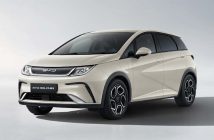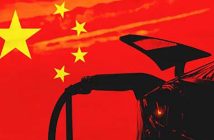+++ AUDI will soon open its first bespoke EV charging hub, which is planned to spearhead a complete network of lounge-style rapid-charging locations. The pilot site, next to the exhibition centre in the German city of Nuremberg, will open to customers on Thursday 23 December, setting the tone for the design and functionality of Audi’s charging hubs. The hub aims to meet “customers’ expectations of a premium charging experience”, with drivers able to wait in a staffed 200 square metre lounge while their vehicle charges. Audi envisages that customers will spend between 20 – 30 minutes at a time there. Ralph Hollmig, who heads up Audi’s charging hubs project, said: “We want to use it to test flexible and premium-oriented quick-charging infrastructure in urban spaces. We’re going where our customers don’t necessarily wake up in the morning with a fully charged electric car and at the same time thinking about increasing charging demand in the future”. The modernist building itself is made from “flexible container cubes” that can be assembled and disassembled in a matter of days, Audi said. Each cube houses 2 fast chargers, which are powered by repurposed lithium ion batteries from scrapped Audi prototype cars to reduce cost and resource usage. Powering its devices in this way also means Audi doesn’t have to wire each charger into the grid or install large transformer devices, thereby slashing planning and construction times. The pilot hub can store some 2.45 MWh (2.450 kWh) of electricity, supplied chiefly by a 200kW ‘green power’ connection to the grid, with a 30 kW contribution from roof-mounted solar panels. The 6 charging points at the pilot location can charge at speeds of up to 320 kW and Audi promises that up to 80 cars per day can use the site without reaching the limits of the energy storage system’s capacity combined with the hub’s 200 kW power input. Audi’s fastest-charging EV, the e-Tron GT, can accept rates of up to 270 kW, meaning it can gain around 100 km of range in 5 minutes at the Nuremberg site. Customers who have a Charging Service subscription through Audi can charge at 31 cents per kWh, which Audi says makes it “a real alternative to charging at home”. The site will be open to drivers of EVs made by other companies as well, but general-access pricing hasn’t yet been confirmed. Audi will focus specifically on development of its new charger booking system at the Nuremberg facility. Customers can reserve chargers through the MyAudi app, and then the charger itself can authenticate the transaction when plugged into the car (so long as it’s equipped with “plug and charge” functionality). Audi has previously said it plans to install six of these hubs as part of a feasibility study before a mass roll-out, but it has yet to detail further expansion plans beyond Nuremberg. +++
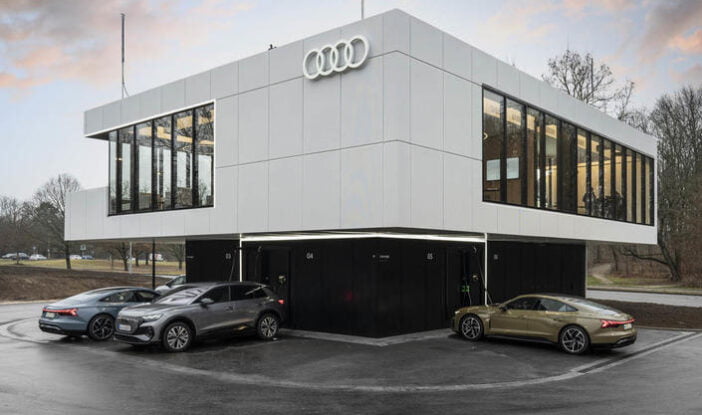
+++ The Hyundai Motor Group, which includes Kia and Genesis, made big news by announcing at the end of 2014 that it was bringing on Albert BIERMANN to its research and development division. He had spent just over 30 years at BMW and was in charge of the M division before he left. His time at Hyundai led to some of the company’s best driving cars, which meet or beat the global competition. But now, the company has announced Biermann is retiring. At 65 years old, it’s not entirely surprising that Biermann would be looking at retirement, and he seems to be leaving on good terms. “South Korea will remain as my second home, and all of my colleagues at Hyundai Motor Group will always be considered part of my family. I would like to recognize that our success has always been based on the strong collective spirit of the many talented people at Hyundai, and I will value our unique achievements wherever I live”, he said in a release from Hyundai. Fortunately, Biermann will still be an Executive Technical Advisor for the company. Specifically, he’ll be advising on electrified performance cars. We say fortunately, because Biermann has been so involved in some of the company’s best cars. He helped make the company’s rear-drive-based cars such as the Kia Stinger and Genesis models so fun to drive. He also helped setup Hyundai’s N sub-brand, and the N models are among the best sport compacts in the world. Assuming Hyundai has taken to heart many things from Biermann, and with his continued advising, the company should still be in a good position. +++
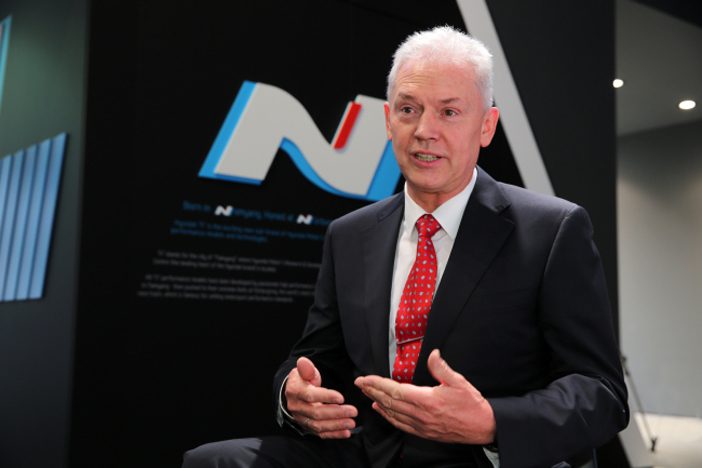
+++ BMW is rolling out its Remote Software Update, also known as over-the-air updates, to customer cars equipped with iDrive 7. The version 21-07 update does come with several improvements to key vehicle tech and functions, including one that enhances the overall feeling while driving. According to BMW, M3 and M4 owners should be inspired by the refinement employed on the engine start sound. Those equipped with BMW’s 8-speed M Steptronic gearbox should also expect clearer audio confirmation of gear changes and changes in shifting loads. These are of course configurable via iDrive but ultimately, BMW touts that the “M driving experience will be even more emotional”. Other OTA updates include an enhancement to in-car technology, starting with Spotify and Pandora. Podcast playlists on Spotify are now available in the vehicle through BMW Connected Music. Those equipped with SiriusXM with 360L now offer Pandora stations, giving BMW owners the ability to customise their own ad-free music channels. BMW’s News app also gets an upgrade, which now incorporates personalised, intelligent filtering of news, significantly higher audio quality, and the introduction of news feeds. Plus, instead of a text-to-speech programme, the news content is read aloud by speakers. Lastly, BMW’s Digital Key is now available in select Android operating system-based smartphones. Initially available on Apple devices, the first Android phones on the list are the Samsung Galaxy S21 Series, as well as the Google Pixel 6 and 6 Pro. This feature was rolled out globally at the start of this month and is now being rolled out to US customers via the OTA updates. Of note, BMW Digital Key allows owners to unlock and lock their Bimmers simply by holding their smartphone next to the driver’s door handle. They can also start the engine when the mobile device is placed in the wireless charging tray. It is available as an option for almost all new BMW models. BMW said that the next Digital Key update will allow owners to pass the key on to 5 individuals. +++
+++ The C8 CHEVROLET Corvette has been out for a few years now. Seeing one on American roads isn’t exactly uncommon, and at a glance, this looks like a new Z06. That alone is interesting, because the Z06 debuted just a few months ago and doesn’t go on sale until later in 2022. In the meantime, Chevrolet is working on the forthcoming Corvette E-Ray hybrid. It will become the first electrified production Corvette ever, and the fact that a test vehicle weared Z06 styling suggests it will certainly emphasise performance over efficiency. I believe the E-Ray will keep the Stingray’s 6.2-litre V8 in standard format, generating 490 or 495 horsepower. The electrification comes through the addition of an electric motor turning the front wheels, making the first hybrid Corvette the first all-wheel-drive model as well. Allegedly anyway, as none of this information is confirmed. But I have gathered information from a few sources at it all points to this same conclusion. Next year, Chevrolet will officially unveil the E-Ray, likely going on sale in 2023. +++
+++ Automobile sales in CHINA , the world’s largest car market, will likely rise 5.4 % to hit 27.5 million in 2022, the country’s top auto industry body said. Of the total, sales of new energy vehicles is expected to grow 47 % to 5 million, the China Association of Automobile Manufacturers (CAAM) said in a statement published on its official WeChat account. For 2021, CAAM expects sales to rise 3.1 % year-on-year to 26.1 million, with new energy vehicles sales rising 1.5 times to 3.4 million. Disrupted by a prolonged global shortage of semiconductors, China’s auto sales dropped 9.1 % in November from a year earlier, marking their seventh consecutive monthly fall, CAAM data showed earlier this month. +++
+++ Chinese electric car brand NIO has unveiled its new ET5 mid-size saloon online, the second of three models based on NIO’s Technology Platform 2.0 following the larger ET7 saloon. Although not yet confirmed, the third vehicle could either be an MPV or a sports car, while the ET5 expands NIO’s model range to five models. Making its debut at the brand’s annual NIO Day event, the ET5 offers battery options that include packs of 75 kWh for a claimed range that exceeds 550km, 100 kWh for a claimed range of more than 700 km and a 150 kWh option that will exceed 1.000 km on a full charge. It’s not yet known if the 150 kWh model will use a solid-state battery, but the predicted range figures for all models are based on the Chinese test cycle, so expect the predicted ranges to drop once homologated through WLTP testing. The ET5’s styling is reminiscent of the larger ET7 (the brand’s only other saloon) with narrow LED running lights and a smooth look from the front. The front bumper features air curtain inlets that help channel air down the side of the car and reduce drag, along with the car’s flush door handles. At 4.790 mm long and with a 2.888 mm wheelbase, the 5’s more compact proportions mean the arching roof (which features a full-length glass panel) is more pronounced, but it tapers aggressively towards the rear, kicking up on the boot lid with a gentle ducktail spoiler that sits above a full-width LED light bar, spanning the boot and the rear wings. Based on NIO’s next-generation platform, which features a 5-link rear suspension set-up, the ET5 features all-wheel drive with a 204 hp electric motor mounted on the front axle and a 286 hp motor on the rear axle, delivering a total of 490 hp and 700 Nm of torque for a claimed 0-100 kph time of 4.3 seconds. The ET5 also features in-house developed 4-piston performance brake calipers. Inside, the ET5 boasts a minimalist design, with a 10.2 inch digital driver display joined by a 12.8-inch central touchscreen, 5G connectivity features, along with tech such as NIO’s PanoCinema digital cockpit, full digital key technology and 19 safety and advanced driver assistance systems, according to the brand. The ET5 will be available in nine exterior colours with six different interior themes. Nappa leather trim and ventilated, massage seats will be available as options. NIO confirmed the ET5 features ultra-long-range, high resolution LIDAR sensors as part of its driver assistance tech to boost its autonomous driving capability. The ET5 75 kWh model will be priced from 328.000 RMB in China before any subsidies, while the 100 kWh car will go on sale for 386.000 RMB; equivalent to around €52.000 and €61.000 for the Dutch market. Logistic costs are not included, however. The brand also outlined that it would offer the ET5 on a monthly subscription, starting from €135 in China (£116). +++
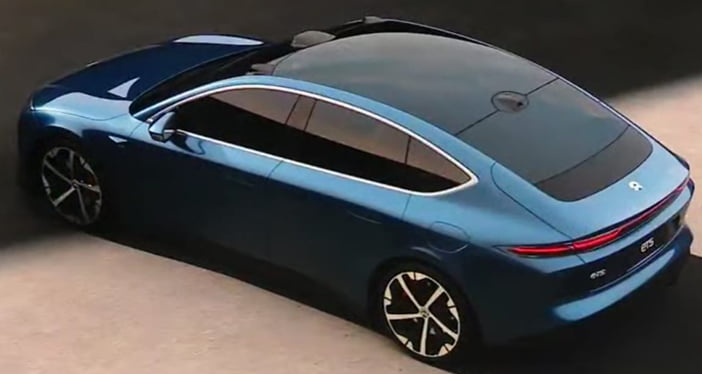
+++ NORTHVOLT chief executive Peter Carlsson wants to take on his old boss Elon Musk with the greenest electric vehicle batteries in the world. But he needs to start producing them first. The Swede is determined to get his factory, roughly 200 km south of the Arctic circle, open for business this month, meaning he and his team of engineers and technicians are laboring at a pace that would rival Santa’s little helpers. “We are working extremely intensely right now to keep that schedule, and even if it means the first battery is made on New Year’s Eve, it’s going out this year”, Carlsson told. The lithium-ion plant was the first to be built in the European Union by a European company and it is meant to be the launchpad for a regional battery champion that can compete not only with Tesla but also Asian suppliers including Panasonic, LG Chem and CATL. Northvolt has raised more than $6.5 billion in funding from the likes of Volkswagen, the European Commission and Spotify founder Daniel Ek as well as contracts worth over $27 billion from automakers. It plans to produce enough batteries to power over 1 million electric vehicles (EV) annually in its Swedish plant in the former gold mining town of Skelleftea, and later supply to other sectors switching to electric, such as industrial machinery and ferries. Carlsson aims to open at least 2 more factories in the next 10 years. A former head of production and supply chain at Tesla, which he left in 2015, Carlsson is hoping his experience working with Musk to scale up the billionaire’s California factory will help him in the snowy reaches of northern Sweden. “During my years at Tesla with Elon I got to know how fun it is to build and scale, and also how very challenging”, Carlsson said. “There is always supply chain issues when you are starting to scale. I think this is something we are going to be very, very focused on during the next 2 years”. Recalls of EV batteries from some of the biggest producers have shown how demanding it is to produce batteries on a large scale, coupled with setting up an “extremely complex” supply chain with both corporate and geopolitical risks. “To get product quality right while scaling production for the first time is obviously a huge challenge”, said Hans Eric Melin, founder of London-based consultancy Circular Energy Storage. Northvolt currently employs about 2.500 people from 108 countries, and plans to add 5.000 more engineers over the next 5 years. Northvolt and Volvo Cars, which aims to go fully electric by 2030, are due to announce a location in Europe for a joint gigafactory early next year. “We could make our own batteries and start from zero”, Volvo CEO Håkan Samuelsson said in an interview. “But I don’t think that would be efficient enough”. Competition for talent is fierce. Most of the battery engineers are based in Asia and Asian suppliers such as LG and Samsung SDI are setting up factories in Europe. Other startups are also trying to get a foothold. Tesla is looking to recruit for its gigafactory in Berlin. Skelleftea (pronounced like ‘she left you’) can’t compete with the German capital’s club scene and its climate can be foreboding with snow cover from November to April and only a few hours of sunshine during the winter. But Carlsson is banking on the green credentials of the city and the plant to attract engineers. Skelleftea runs largely on renewable energy from hydropower and wind and the plant will be 100 % renewable. Batteries will also be recycled there. “As we go into new generations of skill and talent, a paycheck is not enough, they want purpose, they want to be part of a mission”, he said. Money is still important, however, with every employee being offered a slice of the company in the form of an equity stake as part of their salary package. And Northvolt is setting up an entire ecosystem to accommodate staff from as far away as South Korea, Japan and India with housing and company-sponsored social activities including ice hockey and cross-country skiing. It plans to run electric helicopters between Skelleftea airport and the plant underway. To fulfill Northvolt’s expansion plan, the company needs regular infusions of money. The $6.5 billion in funding already raised will not be enough, according to Carlsson. Northvolt is aiming for the Skelleftea plant to achieve production capacity of 60 gigawatt hours (that could power up to 1 million cars per year depending on battery size) as it wants to grab at least a 20-25% market share in Europe by 2030. Last week, Volvo Cars and Northvolt said they will open a joint research and development centre in Sweden as part of a $3.3 billion investment. Melin, the consultant, said Northvolt could well reach its production and market share targets. “With tailwinds, secured supply of raw materials and a well-positioned product mix I can’t see what could stop them. But those are big ifs”, he said. +++
+++ VOLKSWAGEN has officially announced that its latest generation of 4-cylinder diesel engines is approved for use with paraffinic fuels, a newly developed diesel fuel that contains bio-components. According to the automaker, the use of paraffinic fuels should allow a significant decrease in carbon emissions: around 70-95 percent decrease compared with conventional diesel. The press release mainly focuses on fleet vehicles but the German marque also said that all VW models with four-cylinder diesel engines (TDI) delivered since the end of June this year are approved for operation with paraffinic diesel fuels in accordance with European standard EN 15940. These models include the Tiguan TDI, as well as the 8th generation Golf in GTD flavour. “Through the use of environmentally friendly fuels in the approved Volkswagen models, we are making it possible for customers throughout Europe to significantly reduce their CO2 emissions as soon as the fuel is locally available. For example, the use of paraffinic fuels is a sensible additional option particularly for companies with a mixed fleet made up of models with electric and conventional drives”, said Thomas Garbe, Head of Petrol and Diesel Fuels at Volkswagen. Paraffinic fuels are produced from biological residual and waste materials such as hydrotreated vegetable oil (HVO). These biofuels such as HVO are already available on the market, projected to increase their share to 20 to 30 percent in the energy market in Europe within the next 10 years. Examples of paraffinic diesel fuels already available in the market are C.A.R.E diesel, NEXTBTL, and HVO. There’s also the much more widespread diesel option already available, which has been added with paraffinic components. These are said to comply with the requirements of standard EN590. Examples are Diesel R33, V-Power Diesel, OMV MaxMotion, and Aral Ultimate Diesel. All diesel-fed engines, including the older ones, can use the latter type of diesel. +++

